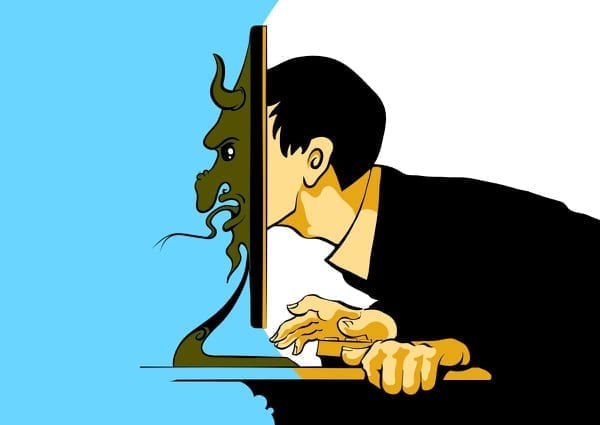A Few Good Tips for Responding to Negative Reviews
Table of Contents:
- Prevention – How to Avoid Negative Reviews in the First Place
- Monitoring – How to Know When a Customer is Complaining Online
- Response – The Five Ps of How to Respond to Negative Reviews
- Follow-Up – Where Do We Go From Here?

Oh yes, you CAN handle the truth. But here’s one truth you need to recognize first. Despite the old adage to the contrary, the customer is NOT always right. You’ll receive positive customer feedback and also negative reviews and customer complaints that may or may not be true.
Learning how to handle ALL negative reviews — whether they’re legitimate or not — is a very important skill to develop if you want your business to stay in business.
Benjamin Franklin once said, “It takes many good deeds to build a good reputation, and only one bad one to lose it.” In these days of instant communication to a worldwide online audience, his observation rings truer than ever.
The Better Business Bureau compiled this list of the top sources of business complaints for the US and Canada combined, for the year 2020. Roofers placed in the top 50.
Wow! Think about that. Why so many complaints? What’s causing so much dissatisfaction within your industry? Is your roofing company doing something that might prompt a customer to whine online, whether or not it’s justified?
One of the reasons roofing contractors are so ill-thought-of is that, as you know, there are some unscrupulous fly-by-night operators who take advantage of entire neighborhoods, especially in the wake of damaging storms.
They’ll offer a volume discount if everyone will just sign up to have them replace their roofs, but, once the work is done, they’ve moved on to the next community and left no forwarding address.
Unfortunately, those guys give reputable roofers a bad reputation. Qualified, professional roofing contractors have all the proper licenses, permits, insurance coverage, worker’s compensation, etc., in place.
According to research from Lee Resource International, for every one complaint received, there are actually 26 angry customers who remain silent. Thanks to the internet, some complaints gain a lot of public exposure. Some even go viral. A prime example is this “United Breaks Guitars” video that first appeared in 2009 but continues to top the list of viral complaints, having garnered more than twenty million views on YouTube and estimated to have cost the airline tens of millions of dollars.
It’s important to realize that customer complaints may well be blessings in disguise, alerting you to a problem that you may have overlooked or been totally unaware of. Responding to and resolving such issues could potentially enhance your brand image by publicly demonstrating your goodwill and proactive approach.
Dmitry Lipinskiy, a social media influencer in the roofing industry, concurs. “How you handle negative reviews can turn out to be the best possible endorsement”.
For the purposes of this discussion, we’ll focus on how to deal with negative online reviews because they are the most public, visible and far-reaching. Your potential customers trust and value online reviews almost as much as personal recommendations, and most likely more than your curated testimonials.
In fact, a customer survey from BrightLocal offered these statistics:
- 88 percent of customers look at online reviews before spending money at a local business.
- 85 percent read as many as 10 reviews.
- 88 percent trust online reviews as much as they do personal recommendations.
Other studies and surveys have produced nearly identical numbers.
There is, however, a delicate balance to maintain. Too many glowing reviews arouse suspicion that you might have planted or paid for them. How you respond to the negative reviews you receive provides potential customers with more realistic expectations about your honesty, commitment and service.
Mr. Lipinskiy has this to add. “You must always respond to ALL reviews – good, but especially bad ones. And promptly. Never argue. Always be reasonable. If someone in your company has made a mistake, acknowledge the problem to validate the customer’s concern and apologize. Then offer a solution that’s fair to both you and the homeowner.
If the customer is being a total jerk, don’t worry and especially don’t get mad. People reading your exchange will know right away if someone’s being unreasonable. Just don’t lose your cool because others are watching carefully to see what you do. It’s how you handle the situation that matters most and can turn a negative into a very valuable positive”.
In this article, we’ll look at four things involved in handling negative reviews and offer some best practices for responding to negative reviews:
- Prevention
- Monitoring
- Response
- Follow-Up
Prevention – How to Avoid Negative Reviews in the First Place.
The old adage that “an ounce of prevention is better than a pound of cure” is certainly true when it comes to dealing with negative reviews. But what does that mean in your business? It’s important to cultivate a positive, “can-do” attitude throughout your company and a culture of service leadership. If you, your crews and your office staff are helpful, courteous and genuinely interested in righting any wrongs the customer may perceive, you’ll likely receive fewer complaints. By handling those few correctly, you’ll earn trust and demonstrate that you’re willing to work toward resolving any issues. Here are some tips that may help prevent negative reviews from happening:
- Establish a documented strategy for addressing customer complaints, in person and online.
- Regularly check that all the systems and procedures you have in place are working as intended.
- Clearly communicate your policies to both staff and customers.
- Ensure your product literature and other information is up to date.
- Make sure that new employees understand what your customer service expectations are.
- Empower your staff to handle customer issues responsibly as they occur.
Monitoring – How to Know When a Customer is Complaining Online.

These days, the beef can come from anywhere — by phone, in person or most commonly online where anonymity can embolden those who wouldn’t normally complain. Platforms such as Angi, Google, Twitter, Facebook, Amazon, Trustpilot, your own blog or website, or even online retailers such as Home Depot and Lowe’s, are likely places for customers to share their grievances with their network about the products you sell or services you provide.
It is critical to monitor these platforms to find out what customers are saying about you and your company, and then to respond to comments — both positive and negative. Although we’re dealing specifically with how to handle negative online reviews, it’s equally important to acknowledge and thank those who offer compliments, praise or positive comments, too.
Social networks, such as Facebook, LinkedIn and Twitter, and review sites, such as Angi, Yelp, Bing, Google, Yahoo!, HomeAdvisor, Better Business Bureau and others have alerts that will notify you every time your company name is mentioned on their platforms.
Please note that, if you’re alerted to a negative review, it’s very time-consuming and virtually impossible to request that a company remove it from its platform. Besides, potential customers reading that negative review will be keenly interested to see how you handle it. View it as an opportunity to demonstrate your commitment to customer satisfaction.

Yes, there will be internet trolls who are nasty for no reason. If you ignore them and don’t engage with them, they’ll eventually lose interest and go away. Legitimate customers recognize trolls for who they are and will not take their comments seriously. They will, however, be watching to see if they get under your skin or not. Never let them!
In addition to setting alerts, you can use a service, like Hootsuite or SproutSocial, to monitor all these sites and platforms. Other services, such as Social Mention, Reputology and ReviewTrackers, specifically monitor review sites. Some monitoring services, such as Google Alerts are free; others, such as Talkwalker, Mentionlytics and Mention.com, require a paid subscription; but they’re affordable and well worth the investment because of the time you’ll save.
Response – The Five Ps of How to Respond to Negative Reviews.
Be PROMPT. Acknowledge any negative comments as soon as possible, even if it’s only to say that you’re aware of the comment and are looking into it. Try to reply within 24 hours or sooner, if you can. Within 48 hours is the absolute latest you should respond.
Be POLITE. It’s easy to take negative comments personally and be angry, especially if you think they’re unfair, unreasonable or just plain wrong. Never respond in haste or in anger. Take some time to cool off. Try to see the situation from your customer’s perspective. Empathy will help you craft a more effective and well-received response. Thank the commenter for bringing the issue to your attention and apologize for the bad experience.
Be PRIVATE. While you should acknowledge all comments publicly, not all issues can — or should — be dealt with in a public forum. People often post under a username or otherwise conceal their identity. Invite them to contact you directly via email or phone to discuss their issue. Viewers will see that you’re being responsive without necessarily knowing all the details. Use your discretion in deciding whether to respond publicly or privately.
Be PERSONAL. Many negative reviews escalate because the commenter feels ignored. People want to feel justified and validated; that’s why a prompt acknowledgment is so important. And no one wants to receive a form letter in response to a complaint! Would you?
Make sure that your response is friendly and respectful, and expresses your sincere desire to resolve the situation. It doesn’t have to be long-winded. Just be yourself and write conversationally, using simple words that are easy to understand.
Be PROFESSIONAL. Always focus on correcting the problem, not the commenter’s behavior or reaction. Apologize that he or she had a bad experience. Be humble and sincere in your response, not defensive or hostile. In subsequent discussions, public or private, ask for details and clarification. Restate the issue in your own words to show that you were actively listening and paying attention to fully understand the complaint from the customer’s point of view.
Follow-Up – Where Do We Go From Here?
So far, you’ve done everything right in terms of acknowledging and addressing your customer’s complaint. He or she is happy with how it all worked out. What should you do next?
- Document the incident for future training purposes.
- Re-evaluate your policies to see if this particular issue could have been prevented.
- Share the complaint and its resolution with your employees.
- Respectfully ask the complainant to leave a positive review of how the issue was resolved.
- Make it easy for all customers to leave positive reviews.
- Send your customers a personal thank-you note for their business, invite them to post a review and ask them for referrals.
- Send all customers a survey after the job has been completed. SurveyMonkey makes it easy to devise and send online surveys. Then, compile and analyze their results. The basic service is free of charge and will more than adequately get you started. A paid subscription offers enhanced functionality.
Learning how to respond to negative reviews takes time, patience and experience; but it will eventually become a part of your service culture, and it will always be a worthwhile investment in your business.


